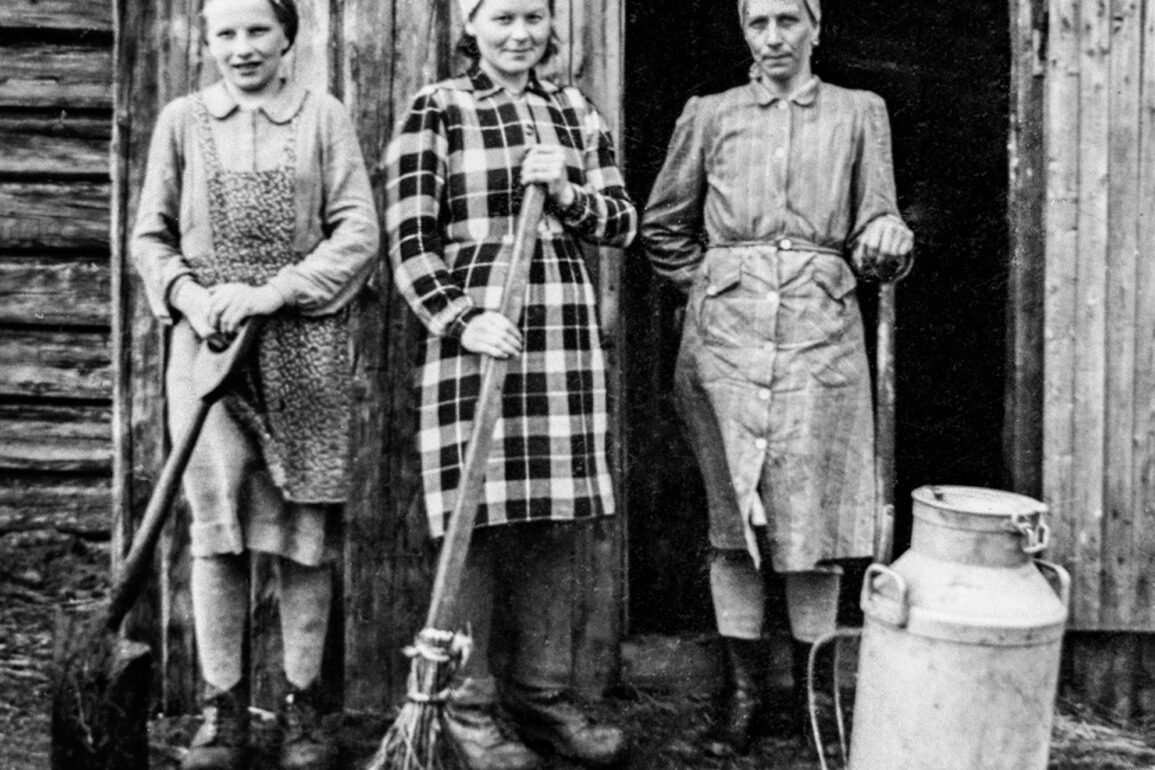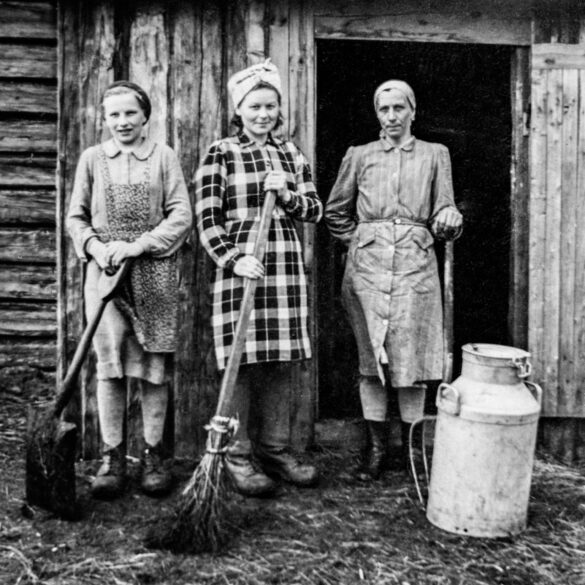You never really know a place until you know its history. Skellefteå is booming and people from all over the world are descending on the city. But what journey has the city been on to arrive at this point?
I delved into the history of my new hometown with the help of Skellefteå Museum exhibition curator, Anna Lindfors. As Anna and I speak, workers are applying the final touches to the new Storsia exhibition, and there is a real buzz about the place.
The Storsia exhibition is the culmination of a project started in 2016. The museum curators have assembled a far-reaching exhibition spanning thousands of years of human existence in the area around Skellefteå, Malå and Norsjö, ranging from archaeological remains to more recent historical artefacts. It’s an exhibition of impressive scope.
A 5,400-year-old ski
Storsia starts in 10,500 BCE at the end of the ice age, followed by the first signs of Neolithic humans in 9,000 BCE. There are lots of little surprising details, and questions, as well as answers, are regularly triggered by the exhibition. For example, the sharpened Neolithic flint pieces are common tools seen across Europe but, note, there is no source of flint in this area. Their origin is probably Danish and it makes you wonder if people travelled especially to bring them here. Was there trade between the regions?
There are several maps placed around the rooms, which remind us that this area has always been part of a wider Europe through trade and the movement of people. Skellefteå’s first inhabitants left very little trace and may have moved around a lot depending on the season – typical hunter-gatherer behaviour. Designs from distant cultures etched into local materials point to external influences from the Russian Volga all the way down to the Mediterranean.
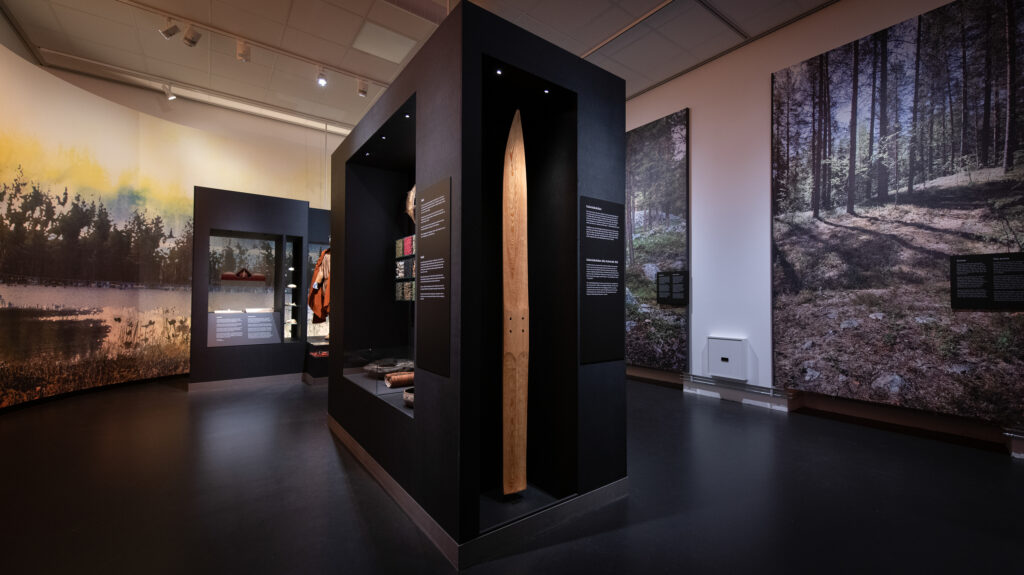
I’m quietly thinking that this is the reason why I see five-year-old Swedes skiing briskly past me on the slopes. Maybe they have at least 5,000 years of ski history in their DNA.

A step into the medieval period gives us Skellefteå’s first written mention as Skeldept (from the Ume Sámi language), and the introduction of Christianity. Despite the influence of the church, ancient folklore traditions were practised. For example, stop by the Bärarn exhibit, used to ask for favours from the spirits. It can supposedly be used to enchant your cow if it isn’t producing enough milk or, more maliciously, to harm the neighbour that you don’t like so much. Make notes, go home and create your own Bärarn – just be careful what you wish for. Keep going and you’ll find exhibits on the Nordic War, Russian War and much more.
Next we get to the discovery of the Gold Belt, a game changer for the area – and you may recognise some of the images if you live in the Boliden area.
Gold in the hills
Out-of-the-box thinking in the 1980s, by the municipality, brought Skellefteå’s famous supercomputer, and no doubt helped propel many of the city’s currently flourishing digital industries.
And now, with Northvolt and its attendant industries, we are at the start of another of Norrland’s many innovative eras, an era which will likely redefine Norrland from an international perspective.
Exhibit notes are in both Swedish and English and there is also a touchscreen to find out more about each item. Tap on the image and you can zoom right in and see the detail of each object.
Another tip – read the background notes on the Storsia website for each of the nine ages exhibited before you start your tour of the exhibition. Doing so will give you context for each part of the exhibition and allow you to concentrate on each exhibit.
A moose on the loose
A walk through this exhibition is like peeling back onion layers from the place you thought you knew, from the digital era to the most ancient and enigmatic, reconnecting us to the land and the culture of Norrland.
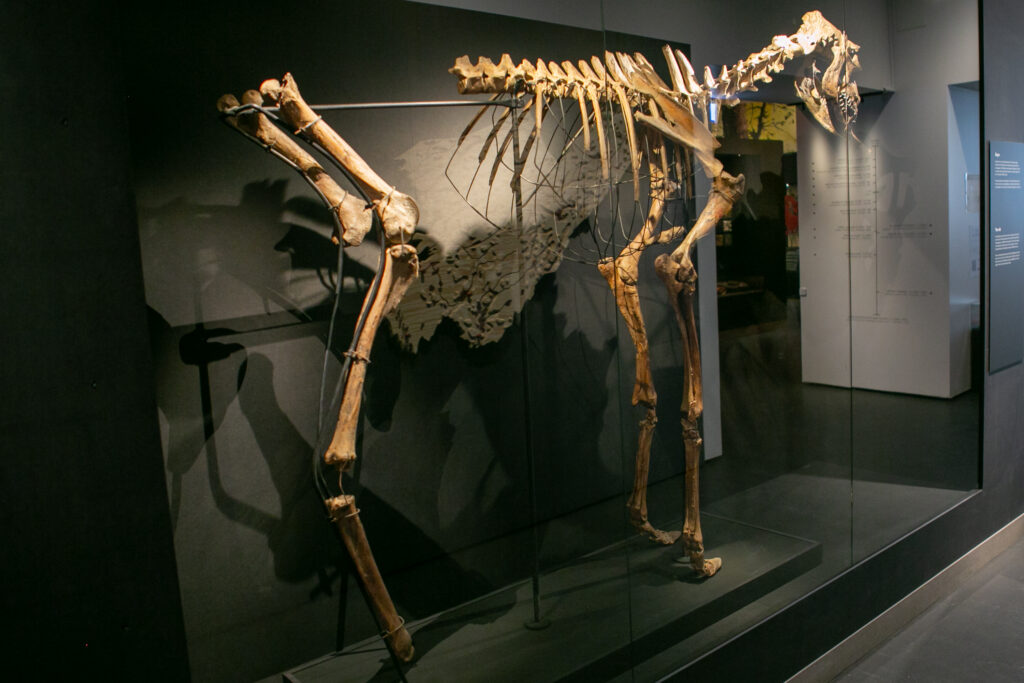
Like many of us, the moose probably didn’t originate here. It came from somewhere else and something elemental carried it downstream, where it settled in Skellefteå for good.
Skellefteå Museum, Ernst Westerlunds allé, 931 32 Skellefteå.
skellefteamuseum.se
